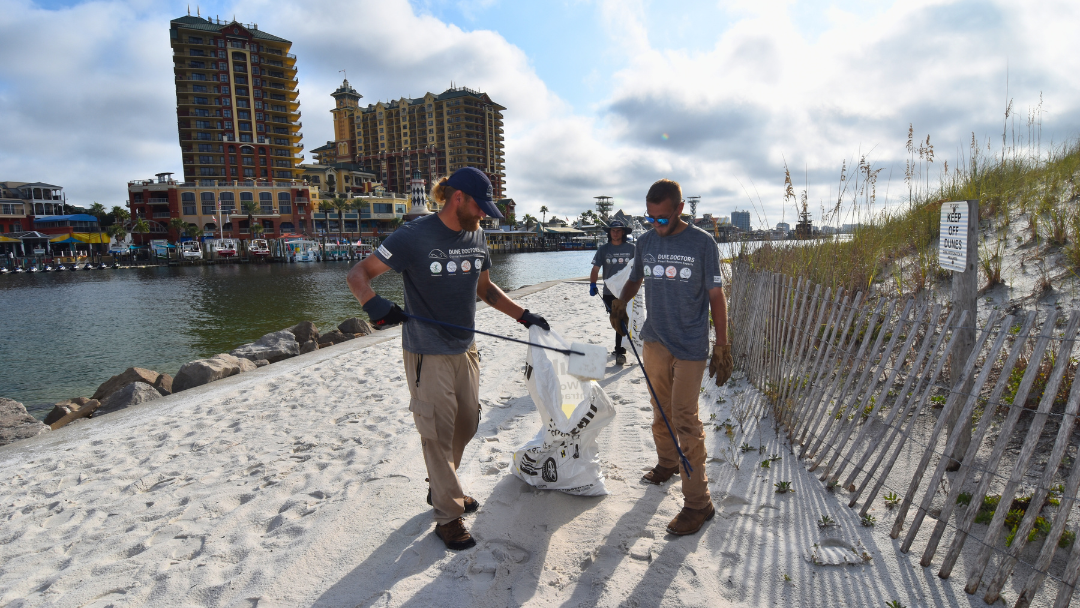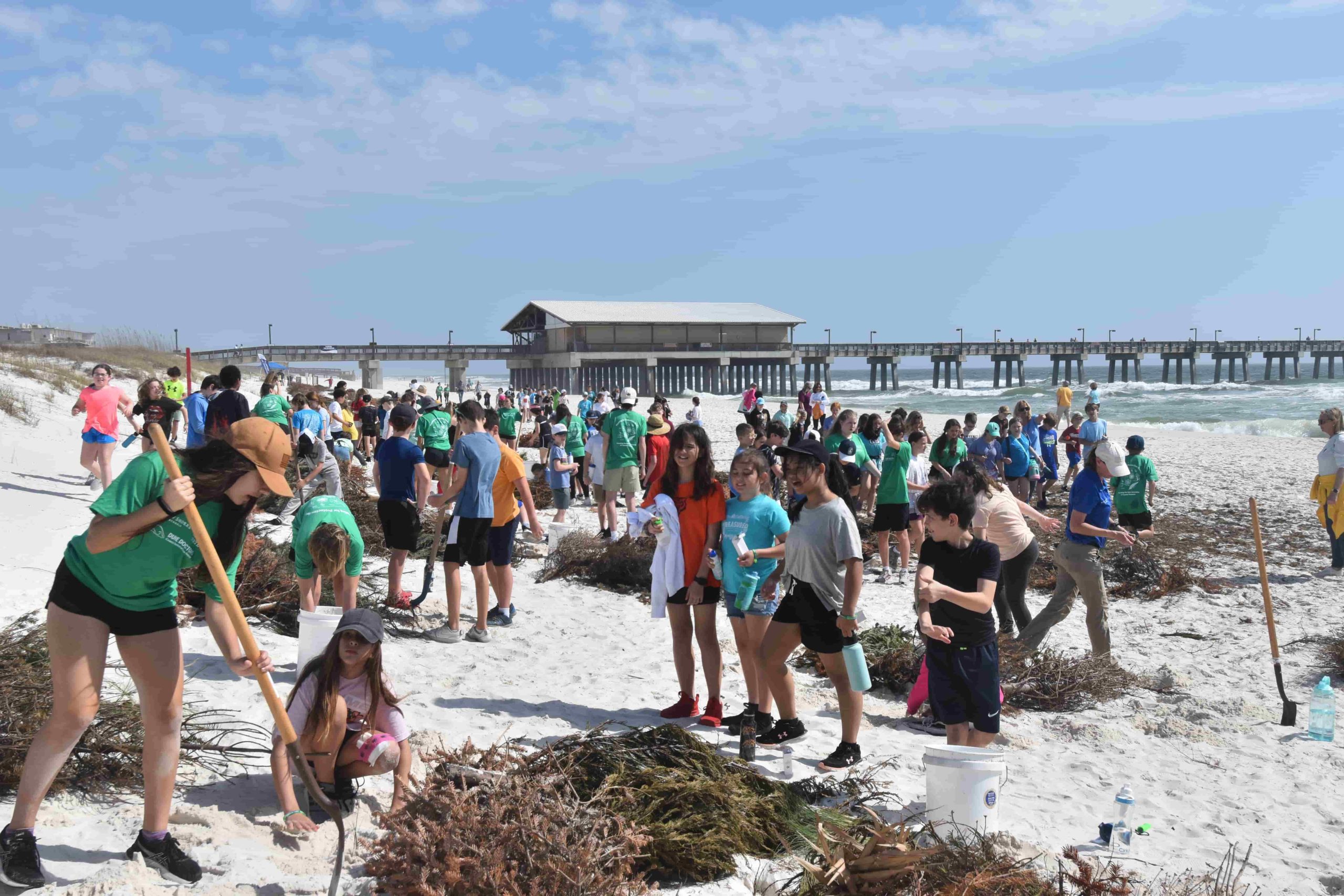Robust Dunes Protect Thriving Coastal Economies
In the past decade, tourism has increased by 67% in the state of Alabama. The state’s tourism department report for 2018 proudly highlighted that travelers spent over 15.5 billion an 8.5% increase from the previous year. The most visited location in Alabama was Baldwin county and it’s beautiful quartz crystal beaches. With a thriving economy in place, Baldwin is striving to protect its coastal community from natural threats. Baldwin county has taken upon itself to define what resilience means for their community as the federal definition does not yet reflect the era of super-storms we have just entered. As homeowners collaborate with insurance providers, engineers, and policymakers, the state of Alabama is now leading the country in constructing storm-resilient homes.
Constructing and adapting homes to withstand the impacts of powerful storms is fundamental to the sustainability of coastal economies. However, without a robust dune ecosystem to absorb the shock of storm surge, the buildings closest to the water, unfortunately, become the first line of defense against high-speed winds and devastating surge.
6 Symptoms of an At-risk Dune Ecosystem
Strengthening the dune ecosystem that lines your property is the most cost-effective way to build a buffer that can minimize the reach of storm surge. Naturally-occurring sand dunes are irregular piles of sand both easily eroded and relocated by storms. However, with routine maintenance and development, you can transform this nomadic structure into a continuous berm that can offer you the protection you need.
Chances are you already have some type of dune formation on the beach-front side of your coastal property. However, a question we often receive from clients is, “are my dunes the best they can be?” Many factors can affect your dune’s health and to help you recognize whether there is an issue, here are 6 symptoms of an at-risk dune ecosystem.
1. There are foot pathways that cut through the dunes
How do you access the beach? If you walk through the dunes, overtime, a pathway will form. Similar to how you can increase the water pressure of a hose by covering part of the opening with your thumb, the foot pathway will channel all the destructive energy of the storm surge directly towards the properties on the other end of the trail. This phenomenon is called the funnel-effect. Another issue that arises is blow-out potential. Blow-out zones are depressions in a sand dune and are commonly caused by foot traffic. Storm surge plowing through the walkway will also greatly erode or “blow-out” the dune area surrounding the depression. This effect leaves behind a gaping hole in your berm.
2. The boardwalks are not built to accommodate sand dune growth
When developing your protection, the goal is to strengthen and widen your main dunes with native vegetation and build new lines of defense. The idea is to install sand fences seaward of your main dune. The sand fences help mother nature progressively accrete sand to form a new berm. In case of a storm, you would rather lose a portion of the new berm and not have the main one impacted. A boardwalk’s length needs to reflect this long-term vision of dune growth. To read more click here!
3. There is an irrigation system on the sand dunes
Native vegetation helps anchor your sand dunes with deep web-like roots that act as a net to hold sand in place. The plants grow these deep roots to seek out water. However, if you provide water along the surface of the dunes, the plants’ roots will have no incentive to go deep. By remaining shallow, the roots cannot protect against erosion. Shut off all irrigation systems to begin reversing these effects. To read more click here!
4. There is an accumulation of dead plant material around the vegetation
Thatch is dead organic plant material that accumulates at the base of the plants. Dune vegetation relies on storms and wind to rapidly bury this dead organic material for the plant to feed off the nutrients. However, due to coastal development and weather patterns, environmental factors may have caused thatch to build-up on some sand dunes. Dried out thatch is a fire hazard, and wet thatch acts like mulch and is a nesting bed for diseases that can kill your healthy plants. Thatch weakens your vegetation, so only use professional help to remove it without uprooting your plants. To read more click here!
5. Invasive species are crowding out the sand dunes
The coast has many ports of entry by which exotic vegetation has entered our communities. Invasive plants that alter the ecology of, hybridize with or crowd out native plants are considered invasive. The beach vitex and naupaka flower are two plants that have displaced native vegetation along the Gulf Coast. Both species can easily reproduce both by seed or cuttings, so do not attempt to weed whack either. Have a professional team remove the invasives to minimize accidental spreading. To read more click here!
6. The sand dunes are regularly fertilized
Dune vegetation has it hard enough, and fertilizing the sand may seem like a way to give the plants a leg up on their environment. However, Gulf Coast beaches are mostly comprised of quartz crystal, and standard fertilizer cannot stick to the particles as it does with garden soil. The few nutrients the plants manage to get ahold of can cause the vegetation to look healthy and robust, but a closer look at the roots will tell a different story. By concentrating nutrients along the surface, fertilizer dissuades the plants from growing deep roots in search of food and water. We have perfected a slow-release formula that will ensure root growth without compromising the plant’s health. To read more click here!
With these 6 symptoms in mind, reflect on the dunes that line your property. Do any of these points ring a bell? If so, fill out our Dune Diagnostic Form, and let us diagnose these potential vulnerabilities for you. Simply check the box for each image that matches what you see around your dunes, and we will shortly contact you and visit your property. We deeply care about strengthening the coast and will provide you with a Dune Master Plan™️ presentation free of charge and tailored to the needs of your sand dunes.
References and Helpful Sources
Alabama’s Tourism Report for 2018
Alabama leads the nation in building the strongest hurricane-resilient homes.
Florida Department of Environmental Services: Building Back the Sand Dunes






